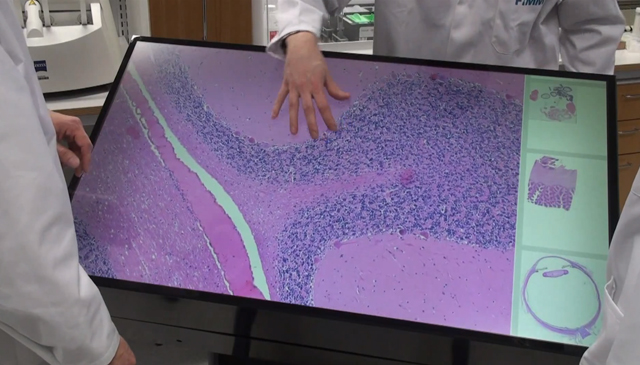Check out this
great blog below by Katherine Rourke
I particularly agree with her final point - we, in HC IT, tend to assume that everyone can see the obvious benefits of EMR - but in reality this is still an idea in progress for many clinicians.
"While HIT insiders and pundits take it as a given that installing an EMR benefits everyone, it’s not so obvious to some gun-shy practices. Even researchers like myself switch gears every time I try to explain what EMR technology can do.
That’s why I was pleased to come across the following
blog item. This piece offers a very solid list of twelve reasons why EMRs can improve patient care, including the following (in no particular order of importance):
* EMRs are less subject to physical damage and data loss than paper records, as the data can be backed up and stored elsewhere.
* EMRs reduce wait times for patients, as there’s no need to wait for a receptionist to pull a chart and get it to the treating clinician.
* Data stored in an EMR can be sent more easily to other clinicians than when using a paper record. (This may not be true if the EMR is balky — in reality, only an HIE can really fulfill this promise — but it
should be true.)
* EMRs that integrate e-prescribing reduce the risk that a patient will get the wrong drug/dose, as poorly-written prescriptions stop being an issue.
The piece also notes that with an EMR in place, practices should have neater workspaces to use (no paper accumulation) and have better access to care documentation during emergencies.
Now, to inject a note of skepticism here, it’s unlikely that most practices will realize all of these benefits quickly.
In particular, I highly doubt that practices will be able to cut back on paper quickly, since if nothing else, they’ll have to do something with the reams of letters and faxes that other providers send to them, and possibly images as well. (It’s no coincidence that the author works for an HIT consulting firm.)
Still, it’s good to see a well-rounded wrap-up of how EMRs might support day-to-day patient care. It’s easy to assume that everyone understands EMRs’ potential — but I’d argue that many clinicians are just beginning to draw these conclusions."


